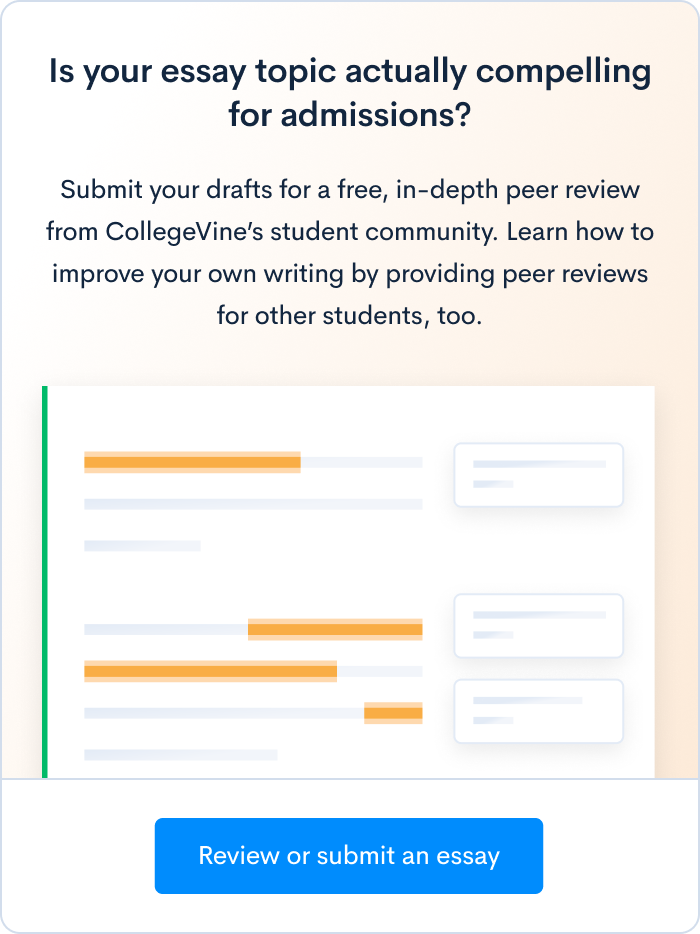Top 50 Affordable Colleges for In-State Students
In-state schools offer a host of benefits for students looking for an affordable yet high-quality education. By paying in-state tuition rates and minimizing travel expenses, you can often save on your education by staying in-state. For many families, cost can often become a key factor in deciding where to apply. Consequently, the affordability of in-state schools becomes even more important if you find that you may not qualify for financial aid. Read on to learn what the most affordable colleges are for in-state students. With so many options to choose from all over the country, it can be hard deciding where to apply. While out-of-state schools may entice you with the adventure of moving to another part of the country, in-state schools are often a more pragmatic choice for students, as they offer many of the same educational benefits as their out-of-state counterparts. More specifically, here’s what in-state schools have to offer: Affordability. When you choose to attend a school in your home state, you’ll pay the in-state tuition rate, whereas going to an out-of-state school means paying a nonresident or out-of-state fee on top of your tuition, which can often double or even triple this educational cost alone. The in-state tuition rate can help keep your cost of education down and lessen your debt burden after graduation. Familiarity. If out-of-state schools offer novelty, then in-state schools offer the opposite, providing a great alternative to those of us who are not necessarily adventurous thrill-seekers. For some students, staying close to family is a very important factor in selecting your future college. Besides, there is a healthy array of in-state schools which can offer students enough distance to allay any fears around unexpected visits from parents, while making it easy to go back home for a weekend or holiday. Relevance. Most college graduates stay in the same city or region where they graduated from, which makes sense since you’re likely to complete internships in and around your college town. If you like your home state and plan to start your career there, then you may want to choose an in-state school over an out-of-state one. More generally, think about where you want to spend your adult life and consider schools in that region. Most students qualify for some type of financial aid, whether it is need-based or merit-based. Although no one really wants them, student loans are considered a form of financial aid, and virtually all students qualify for a student loan when they plan on attending college. However, there are a few reasons why a student might receive no financial aid at all. Here are a few of the most common ones: Failing to file the FAFSA or other financial aid forms. Some students think that, because it’s unlikely that they will qualify for Pell grants or work-study, there’s no point in filing the FAFSA. However, many schools require the FAFSA, along with other forms like the CSS Profile, in order to administer institution-based aid. When students fail to file these important financial aid forms, they lose out on need-based aid. Don’t let common misconceptions keep you from filing! You can learn more about the importance of these forms in our post FAFSA, CSS Profile, IDOC, Oh My: A Guide to Financial Aid. Filing financial aid forms past the deadline. Financial aid forms like the FAFSA have deadlines late in the academic year, but many schools have their own deadlines that are much earlier in the application cycle. As we mentioned, schools use these financial aid forms to make their own decisions about institution-based aid, so while the Federal Student Aid Office might set the deadline for June 30, many schools want the form completed as early as March. In general, it’s a good idea to complete these forms as soon as possible. Some schools award financial aid on a rolling basis, which means that while there’s no deadline, you might receive less aid the longer you wait. So don’t wait! We’ve broken down the state-by-state deadlines in our post What Are the FAFSA Deadlines for 2018-2019 and 2019-2020? Applying to a school late or accepting a waitlist position. This is similar to filling out your financial aid forms late, except that you are making a college decision late. Some schools, especially state schools, are more willing to consider late applications for admission, but they may not have any more aid to award to late applicants, even if you would have otherwise qualified for it. For previously waitlisted students, your new admissions letter will often explicitly state whether there is any aid available to you; if there is any, don’t expect it to be much. Failing to maintain academic progress. This particular reason affects current college students more than prospective students, but it’s important to keep in mind as you apply for aid. Some grants, scholarships, and other types of aid will require you to be enrolled full-time, to attend in-person classes, or to maintain a certain GPA. If students don’t keep up with requirements and make progress towards graduation, their financial aid can be revoked. Criminal offenses. Not every criminal offense disqualifies a student from receiving aid, but it can be significantly harder to receive aid if a student has a criminal record. Sometimes, students are able to receive aid if they can demonstrate that they followed a rehab program and have not committed crimes since the original infraction. That said, a common reason that college students lose aid they previously were eligible for is because of recent criminal offenses, especially ones that violate the school’s code of conduct or ethics code. If you find that you do not qualify for financial aid, don’t fret! There are plenty of public institutions across the country which offer affordable tuition for in-state students, including the following: State: New York Average Net Price for an in-state student who doesn’t qualify for financial aid: $6,586.58 State: Colorado Average Net Price for an in-state student who doesn’t qualify for financial aid: $8,602.28 State: Michigan Average Net Price for an in-state student who doesn’t qualify for financial aid: $10,246.08 State: Mississippi Average Net Price for an in-state student who doesn’t qualify for financial aid: $10,406.50 State: Pennsylvania Average Net Price for an in-state student who doesn’t qualify for financial aid: $12,122.64 State: California Average Net Price for an in-state student who doesn’t qualify for financial aid: $13,032.00 State: West Virginia Average Net Price for an in-state student who doesn’t qualify for financial aid: $13,304.55 State: Pennsylvania Average Net Price for an in-state student who doesn’t qualify for financial aid: $13,516.03 State: Pennsylvania Average Net Price for an in-state student who doesn’t qualify for financial aid: $13,554.00 State: Pennsylvania Average Net Price for an in-state student who doesn’t qualify for financial aid: $13,867.21 State: New Hampshire Average Net Price for an in-state student who doesn’t qualify for financial aid: $14,113.16 State: Missouri Average Net Price for an in-state student who doesn’t qualify for financial aid: $14,500.00 State: Missouri Average Net Price for an in-state student who doesn’t qualify for financial aid: $15,413.57 State: Utah Average Net Price for an in-state student who doesn’t qualify for financial aid: $15,652.98 State: New Mexico Average Net Price for an in-state student who doesn’t qualify for financial aid: $15,718.90 State: Utah Average Net Price for an in-state student who doesn’t qualify for financial aid: $15,791.14 State: Louisiana Average Net Price for an in-state student who doesn’t qualify for financial aid: $16,480.15 State: Alabama Average Net Price for an in-state student who doesn’t qualify for financial aid: $16,569.83 State: Tennessee Average Net Price for an in-state student who doesn’t qualify for financial aid: $16,589.08 State: Nebraska Average Net Price for an in-state student who doesn’t qualify for financial aid: $16,591.90 State: Idaho Average Net Price for an in-state student who doesn’t qualify for financial aid: $16,604.11 State: Missouri Average Net Price for an in-state student who doesn’t qualify for financial aid: $16,619.42 State: Iowa Average Net Price for an in-state student who doesn’t qualify for financial aid: $16,650.82 State: New York Average Net Price for an in-state student who doesn’t qualify for financial aid: $16,837.96 State: Montana Average Net Price for an in-state student who doesn’t qualify for financial aid: $16,844.88 State: Wisconsin Average Net Price for an in-state student who doesn’t qualify for financial aid: $16,947.16 State: Kentucky Average Net Price for an in-state student who doesn’t qualify for financial aid: $17,129.71 State: Alabama Average Net Price for an in-state student who doesn’t qualify for financial aid: $17,180.84 State: Montana Average Net Price for an in-state student who doesn’t qualify for financial aid: $17,194.17 State: South Carolina Average Net Price for an in-state student who doesn’t qualify for financial aid: $17,253.00 State: Missouri Average Net Price for an in-state student who doesn’t qualify for financial aid: $17,268.90 State: North Carolina Average Net Price for an in-state student who doesn’t qualify for financial aid: $17,279.96 State: Wyoming Average Net Price for an in-state student who doesn’t qualify for financial aid: $17,284.47 State: Wisconsin Average Net Price for an in-state student who doesn’t qualify for financial aid: $17,333.36 State: Oklahoma Average Net Price for an in-state student who doesn’t qualify for financial aid: $17,335.00 State: Kansas Average Net Price for an in-state student who doesn’t qualify for financial aid: $17,534.45 State: Missouri Average Net Price for an in-state student who doesn’t qualify for financial aid: $17,541.62 State: Kentucky Average Net Price for an in-state student who doesn’t qualify for financial aid: $17,626.63 State: Wisconsin Average Net Price for an in-state student who doesn’t qualify for financial aid: $18,018.14 State: Wisconsin Average Net Price for an in-state student who doesn’t qualify for financial aid: $18,035.89 State: North Carolina Average Net Price for an in-state student who doesn’t qualify for financial aid: $18,081.56 State: Maine Average Net Price for an in-state student who doesn’t qualify for financial aid: $18,194.21 State: Wisconsin Average Net Price for an in-state student who doesn’t qualify for financial aid: $18,264.34 State: Mississippi Average Net Price for an in-state student who doesn’t qualify for financial aid: $18,417.31 State: Illinois Average Net Price for an in-state student who doesn’t qualify for financial aid: $18,440.25 State: Mississippi Average Net Price for an in-state student who doesn’t qualify for financial aid: $18,442.53 State: Iowa Average Net Price for an in-state student who doesn’t qualify for financial aid: $18,446.00 State: Florida Average Net Price for an in-state student who doesn’t qualify for financial aid: $18,462.51 State: Wisconsin Average Net Price for an in-state student who doesn’t qualify for financial aid: $18,564.43 State: Wisconsin Average Net Price for an in-state student who doesn’t qualify for financial aid: $18,634.44 Affordability is an important factor that every student should consider when deciding which college to attend, but there are a lot of others too: location and size of school, majors and extracurriculars offered, and competitiveness or selectivity. It’s important to do your research and create your own criteria for your college decision. Want access to expert college guidance — for free? When you create your free CollegeVine account, you will find out your real admissions chances, build a best-fit school list, learn how to improve your profile, and get your questions answered by experts and peers—all for free. Sign up for your CollegeVine account today to get a boost on your college journey. Check out some of our other posts on affording college: Which Colleges Give Out the Most Merit Aid? A List of the Top 50Why Should You Consider In-State Schools?
Why Do Some Students Not Qualify for Financial Aid?
The 50 Most Affordable Colleges for In-state Students Who Don’t Qualify for Financial Aid
1. CUNY Brooklyn College
2. University of Colorado Denver–Anschutz Medical Campus
3. University of Michigan–Dearborn
4. Mississippi University for Women
5. Pennsylvania State University–New Kensington
6. National University
7. Shepherd University
8. Pennsylvania State University–Abington
9. Pennsylvania State University–York
10. Pennsylvania State University–Lehigh Valley
11. University of New Hampshire at Manchester
12. College of the Ozarks
13. Truman State University
14. Brigham Young University–Provo
15. New Mexico Institute of Mining and Technology
16. University of Utah
17. Louisiana Tech University
18. University of Montevallo
19. Tennessee Technological University
20. Wayne State College
21. University of Idaho
22. University of Central Missouri
23. Iowa State University
24. St. Joseph’s College–New York
25. The University of Montana–Western
26. University of Wisconsin–La Crosse
27. Morehead State University
28. University of Alabama in Huntsville
29. The University of Montana
30. Southern Wesleyan University
31. Northwest Missouri State University
32. University of North Carolina at Greensboro
33. University of Wyoming
34. University of Wisconsin–Whitewater
35. Oklahoma Panhandle State University
36. Emporia State University
37. Southeast Missouri State University
38. Western Kentucky University
39. University of Wisconsin–Stevens Point
40. University of Wisconsin–Platteville
41. Winston-Salem State University
42. University of Maine
43. University of Wisconsin–River Falls
44. University of Southern Mississippi
45. University of Illinois at Springfield
46. University of Mississippi
47. University of Iowa
48. New College of Florida
49. University of Wisconsin–Oshkosh
50. University of Wisconsin–Green Bay
How Can You Find the Right College for You?





